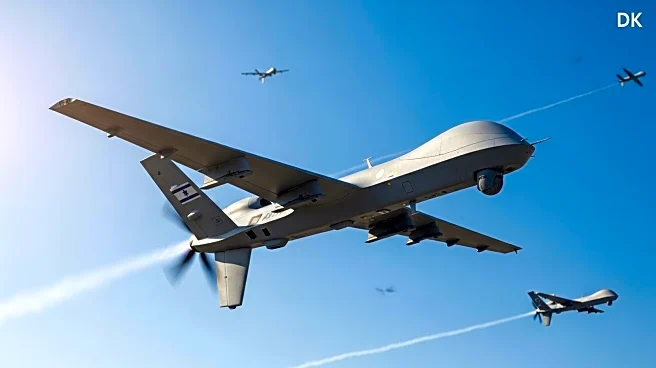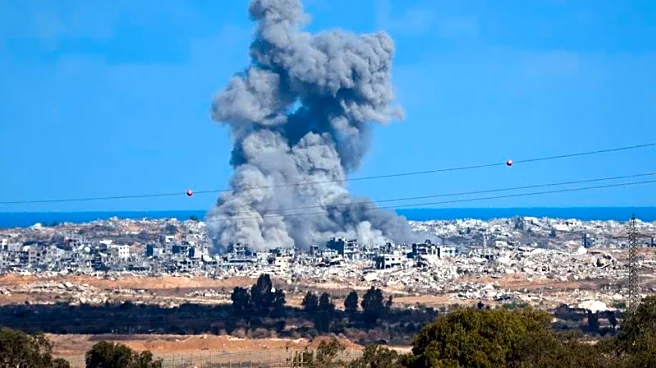What is the story about?
What's Happening?
The United States is deploying approximately 200 troops to Israel to assist in monitoring the ceasefire agreement in Gaza. This initiative is part of a broader effort involving partner nations, NGOs, and private sector entities. The U.S. Central Command is establishing a civil-military coordination center in Israel to facilitate humanitarian aid and provide logistical and security support. The deployment follows a breakthrough ceasefire deal between Israel and Hamas, mediated by the United States and regional partners. The agreement aims to halt the ongoing conflict, which has resulted in significant casualties and regional instability. The U.S. troops, specializing in transportation, planning, security, logistics, and engineering, will not enter Gaza but will support the transition to a civilian government in the territory.
Why It's Important?
The deployment of U.S. troops to Israel underscores the United States' commitment to stabilizing the region and supporting peace efforts. The ceasefire agreement is crucial for reducing violence and facilitating humanitarian aid to Gaza, which has suffered extensive damage and loss of life. The involvement of U.S. military personnel in monitoring the ceasefire highlights the strategic importance of the region and the U.S. role in international peacekeeping efforts. This move may influence U.S. foreign policy and military strategy in the Middle East, potentially affecting diplomatic relations with Israel and other regional actors.
What's Next?
The next steps involve the implementation of the ceasefire agreement, including the disarmament of Hamas and the withdrawal of Israeli forces from Gaza. The establishment of a civilian government in Gaza is a critical component of the peace process. The U.S. troops will continue to arrive in the region over the weekend to begin planning and operational efforts. The success of the ceasefire and subsequent political developments will be closely monitored by international stakeholders, with potential implications for regional stability and U.S. foreign policy.
AI Generated Content
Do you find this article useful?















